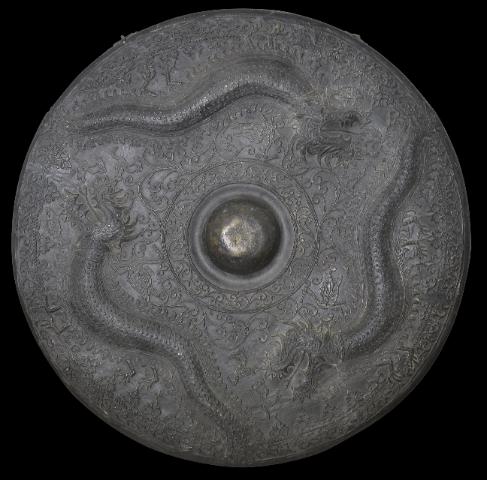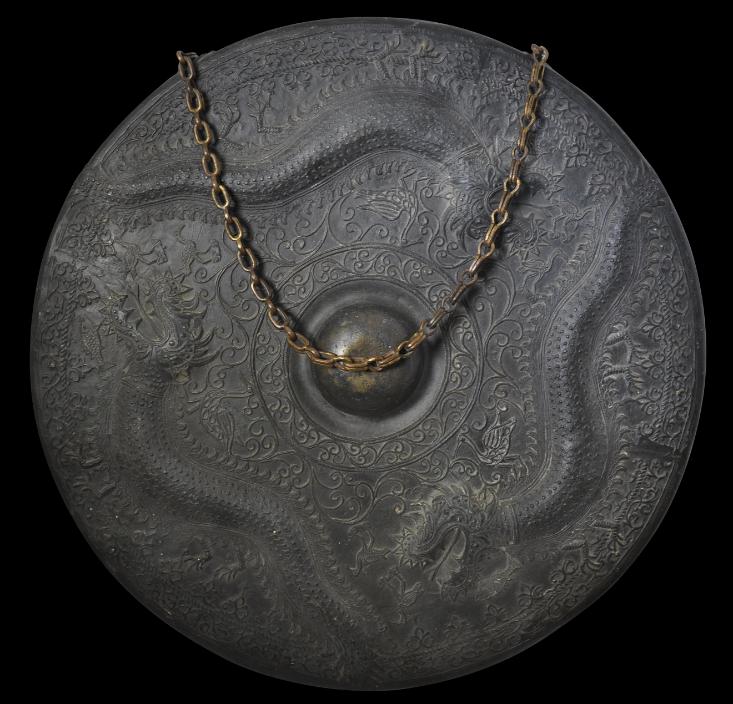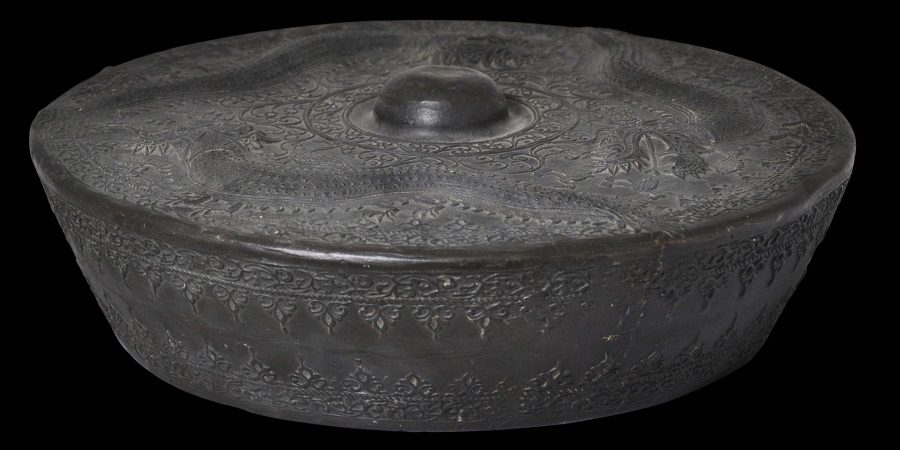This gong or tawak-tawak is from Sarawak or Brunei on the island of Borneo. It is notable for it size, the fineness of its decoration, and for the incorporation of water birds among its motifs.
Cast using the lost wax process, it is elaborately decorated on the face with three swirling dragons amid scrolling water-weed patterns. The wide and slightly everted rim is similarly decorated with scrolling water-weed motifs. Fishes and unusually, water birds, are also among the surface decoration, all in applied relief. An old brass suspension chain is attached to the sides of the gong.
The particularly prominent central boss and wide rim are typical of Malay gongs compared with Thai and Burmese gongs that are flatter and more shallow. Tawak-tawak once were used as signal gongs to call people together. They tended not to be used as part of a gamelan orchestra as in nearby Indonesia. Gong smiths, like kris smiths, worked in an atmosphere of magic and incantation. Some gongs were believed to be protected by supernatural beings (Singh, 1985). They also served as status symbols and visible displays of power. Such gongs were also used in barter trade – as a store of wealth and as a form of currency.
Extant examples of old brassware from Brunei and elsewhere on the island of Borneo frequently exhibit strong Chinese influence such as dragons despite Islam being Brunei’s main religion today.
Children’s stories that are still told in Brunei and Borneo feature tales of Chinese princes and dragons. One tells of a dragon that lives atop Mount Kinabalu (Borneo’s highest mountain) where it guards a magnificent precious stone the size of a peacock’s egg. The Emperor of China hears about the stone and tells his three sons that whichever one of them brings back the stone will be made his heir; the other two will be killed. One son manages to trick the dragon and captures the stone. But the other sons lie to their father that they were the ones to take the stone. Ultimately, the Emperor discovers this deception and the wayward sons escape China, one of whom returns to Brunei and to found a princely dynasty.
Click here to see a similar example in the British Museum.

An example in Malaysia’s National Museum. (Photographed February 2017).
References
Chin, L., Cultural Heritage of Sarawak, Sarawak Museum, 1980.
Singh, B., Malay Brassware, National Museum of Singapore, 1985.







